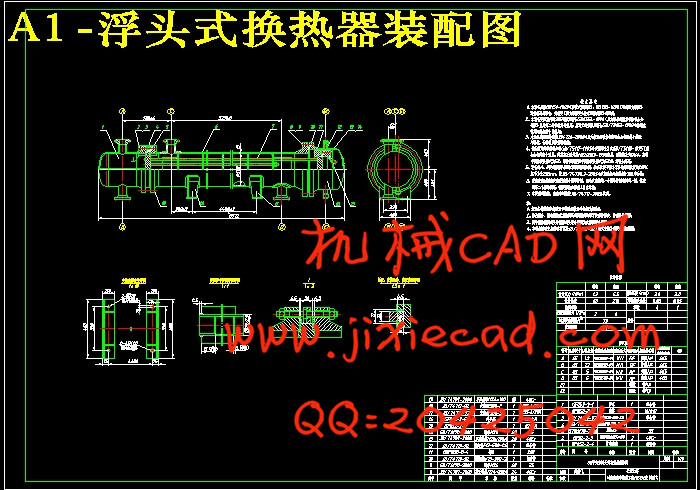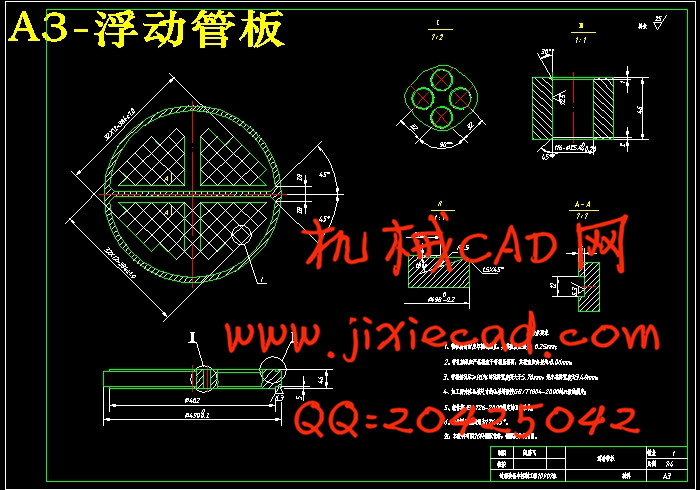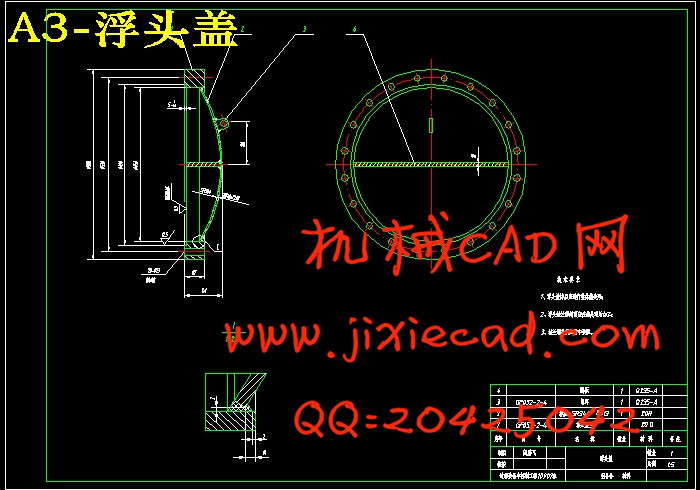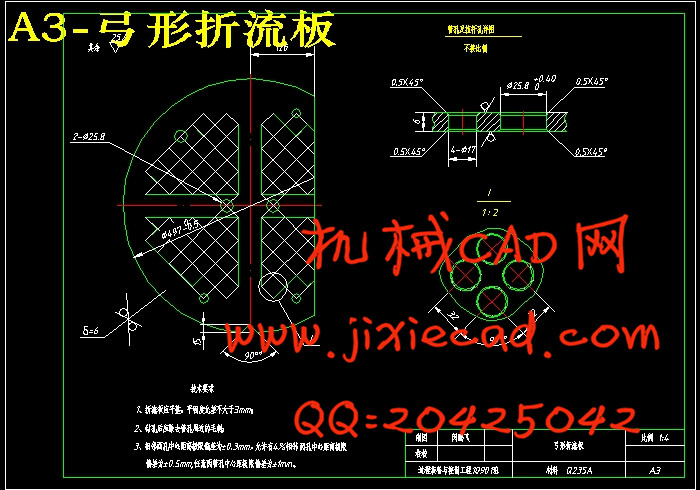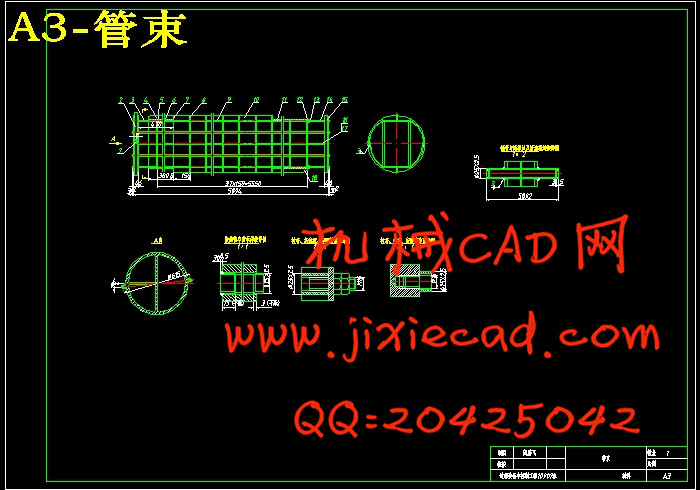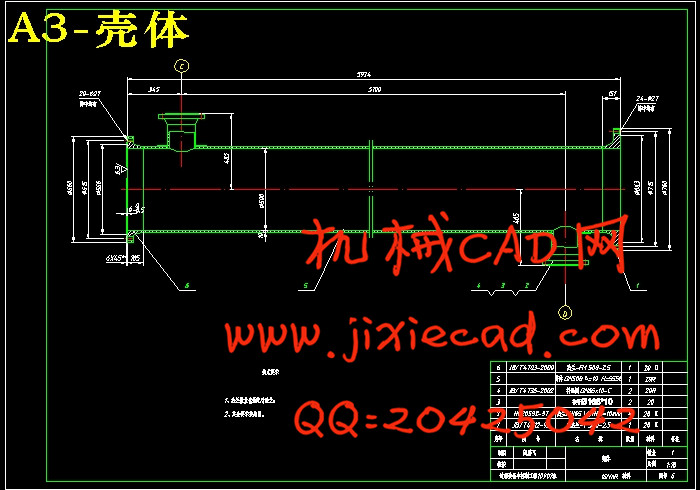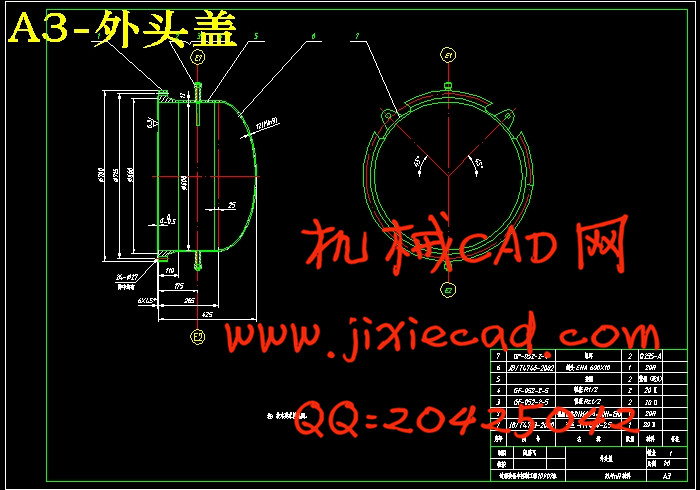设计简介
80平方米浮头式换热器的设计
[摘要]本次设计的题目为80平方米浮头式换热器。浮头式换热器是管壳式换热器系列中的一种,它的特点是两端管板只有一端与外壳固定死,另一端可相对壳体滑移,称为浮头。浮头式换热器由于管束的膨胀不受壳体的约束,因此不会因管束之间的差胀而产生温差热应力,另外浮头式换热器的优点还在于拆卸方便,易清洗。在化工工业中应用非常广泛。本文对浮头式换热器进行了整体的设计,按照设计要求,在结构的选取上,采用了1-4型,即壳侧单程,管侧四程。首先,通过换热计算确定换热面积与管子的根数初步选定结构。然后按照设计的要求以及一系列国际标准进行结构设计,之后对有些部件进行了强度校核并对结构进行了优化,最后提出一些制造与安装方面的问题。
[关键词]换热器;浮头;管壳
Design of 80floating head heat exchanger
[Abstract]:The topic of my study is the design of 80 floating head heat exchanger. The floating head heat exchanger is a special type of tube and shell heat exchanger. It is special for its floating head. One of its tube sheet is fixed, while another can float in the shell, so called floating head. As the tubes can expand without the restriction of the shell, it can avoid thermal stress. Another advantage is that it can be dismantled and clean easily . It is widely used in chemical industry. In this study an overall design of the floating head heat exchanger is carried out .According to the demand the type 1-4 is chosen to be the basic type, which has single segment in shell and four segment in tubes. First, heat transfer is calculated to determine the heat exchange surface area and the number of tubes that needed. Then, according to the request and standards, structural of system is well designed. After that, the finite element analysis of the shell is completed employing optimal design result is given. Finally, some manufacture and installation issues are related.
[Key words]:heat exchanger;floating head;tube and shell
摘要 ⅩⅥ
Abstract ⅩⅦ
前言 1
1 绪论 2
1.1概述 2
1.2我国换热器发展前景 2
1.3国外换热器发展现状及前景 3
2 热力计算 7
2.1原始数据 7
2.2定性温度和物性参数计算 7
2.3初选结构 8
2.5壳程换热计算 10
2.6传热系数 11
2.7管程压降 12
2.8壳程压降 13
2.9压强校核 14
3 结构设计 15
3.1换热流程设计 15
3.2管子和传热面积 15
3.3管子排列方式 15
3.4壳体 16
3.5管箱 17
3.5.1.封头 17
3.5.2.箱壳 18
3.6固定管板 18
3.7分程隔板 18
3.7.1管程分程隔板 18
3.7.2壳程分程隔板 18
3.8折流板 19
3.9拉杆 20
3.10进出口管 20
3.10.1.管程进出管 20
3.10.2.壳程进出口管 20
3.11浮头箱 20
3.12浮头 21
3.13补强圈 21
3.14法兰 22
3.14.1法兰密封面的型式 22
3.14.2壳体法兰 22
3.14.3接管法兰 23
3.15支座 23
4 强度校核 25
4.1壳体强度校核 25
4.2管箱封头强度校核 25
5 制造工艺及安装 27
5.1制造工艺 27
5.1.1封头的成形 27
5.1.2筒节的弯卷成形 27
5.1.3其它 28
5.2安装与拆卸 28
总结 30
参考文献 32
致谢 33


